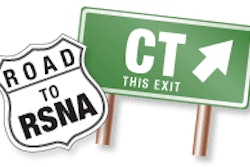Sunday, November 25 | 12:30 p.m.-1:00 p.m. | LL-PHS-SU7A | Lakeside Learning Center
In this poster presentation, researchers will explain how combining computer-aided detection (CAD) systems for solid and subsolid lung nodules can increase nodule detection.In the landmark International Early Lung Cancer Action Program (I-ELCAP) study, only 19% of all nodules found at baseline were subsolid nodules, but they accounted for 52% of all lung cancers. However, most lung CAD systems perform poorly for detecting these subsolid nodules because they were primarily developed to detect solid nodules, according to presenter Colin Jacobs, from Fraunhofer MeVis in Germany.
"Given the high malignancy rates of subsolid nodules, it is important that computer-aided detection systems detect both solid and subsolid nodules," he said.
To address this problem, the research team proposed a combination of CAD systems for solid and subsolid nodule detection and evaluated the resulting system on a database from the Nederlands-Leuvens Longkanker Screenings Onderzoek (NELSON) lung cancer screening trial. The combination of both systems substantially increased sensitivity for the detection of pulmonary nodules, Jacobs said.




















